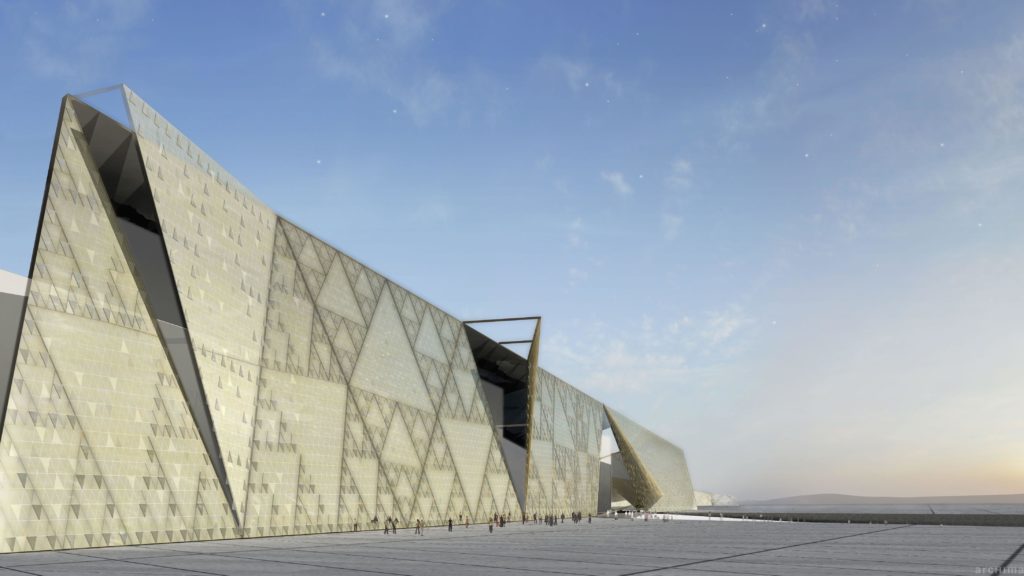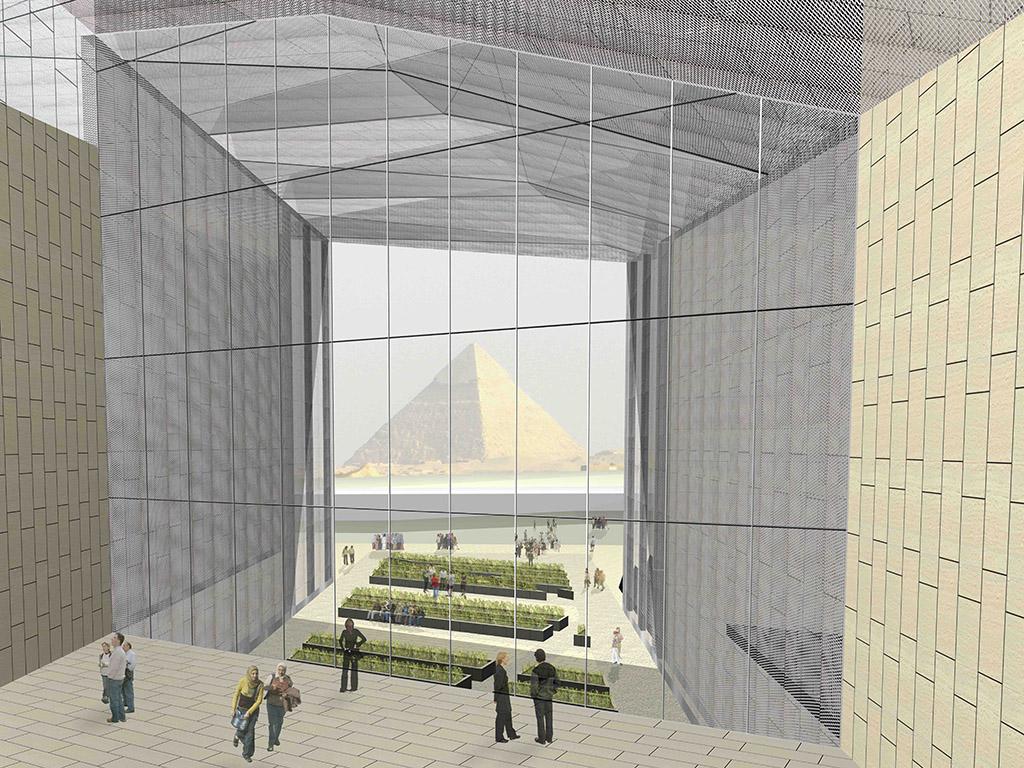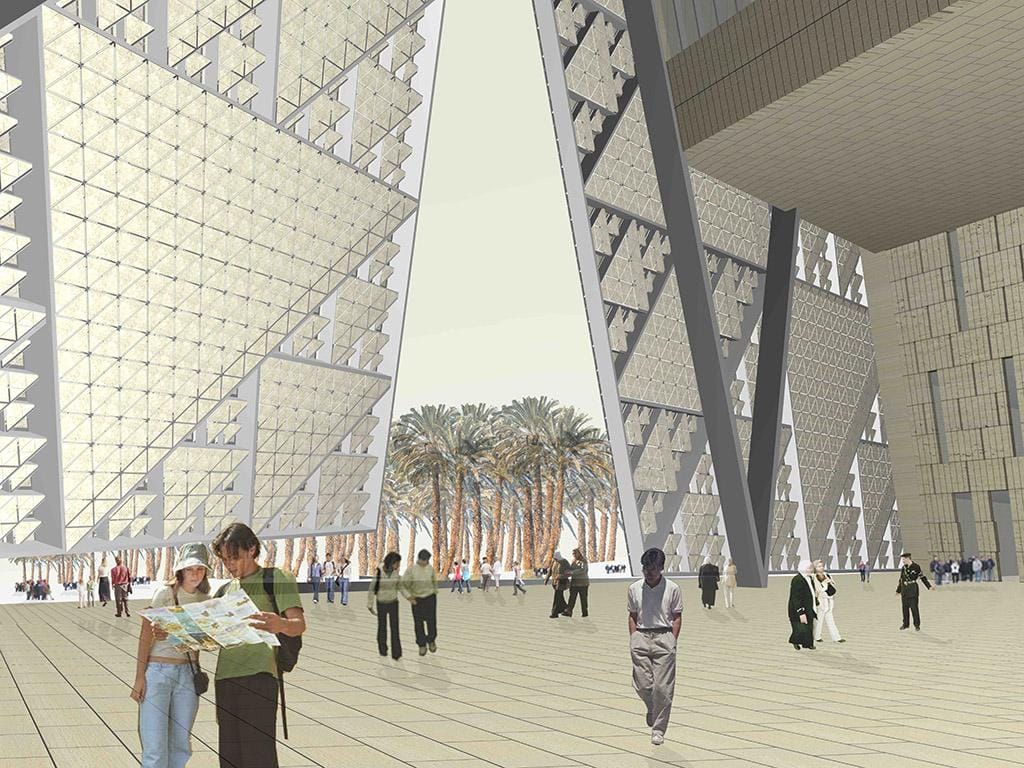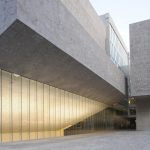The opening of the Grand Egyptian Museum (GEM) is now within reach. The ultra-modern museum complex near Cairo will open its doors for the first time at the end of the year.
It is the largest museum in the world dedicated to a civilization. The new cultural center for ancient Egyptian history shows more than 50,000 exhibits from various Egyptian museums and archaeological sites. And not only that: the location with a view of the pyramids of Giza is unique. As is the world premiere that for the first time the complete Tutankhamun collection with artifacts never seen before is shown.
About the Grand Egyptian Museum
The Grand Egyptian Museum is designed as an important cultural epicenter for ancient Egyptian history and heritage. It offers visitors a unique and inspiring experience where treasures and leisure time are intertwined. The GEM, with its striking architectural design and distinctive location overlooking the Great Pyramids of Giza, is intended to be a “must-see” destination, showing the interface between modern and ancient Egypt. The Grand Egyptian Museum will show thousands of collections of a single ancient civilization, with many objects on display for the first time.
The GEM is more than just a museum:
It will expand the traditional role of a museum as a place for exhibiting cultural and historical artifacts and will also become a place for research and entertainment.
The vision
It is the ambitious goal to be the largest and most visited museum in the world, to belong to a single historical civilization and to contribute to Egypt’s unique positioning as a first-class tourist destination and global cultural center.
The mission
The Grand Egyptian Museum’s mission is to be the development of a sustainable model for a world-class iconic destination. This is to be achieved by exhibiting unique and significant exhibits, promoting Egyptian heritage locally and internationally, and integrating cultural and entertainment components. At the same time, the mission is to create an inspiring visitor experience, promote research and innovation in the field of cultural heritage management and apply the highest management and operational standards and technologies. All with the aim of contributing to Egypt’s economic development.
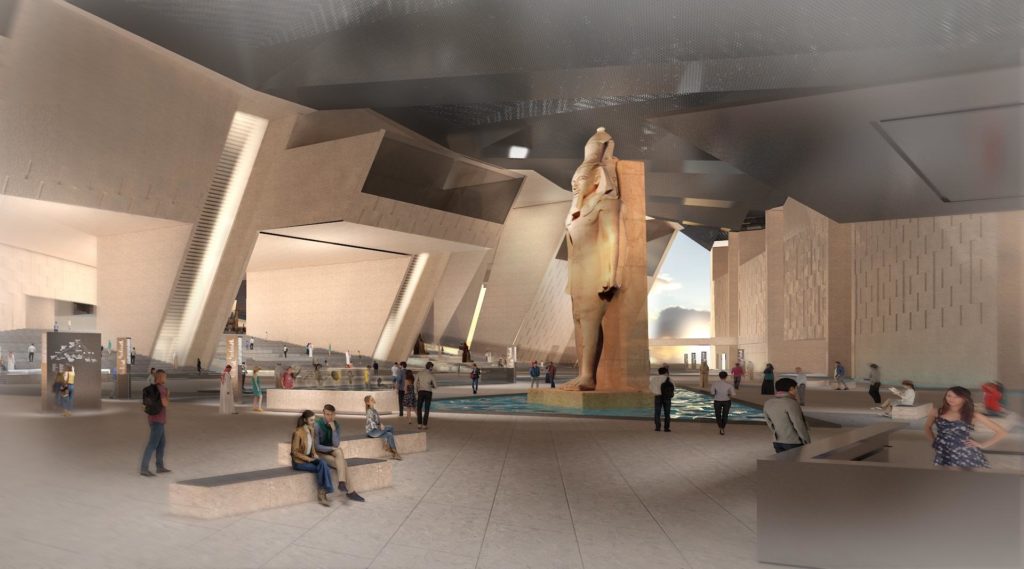
As soon as visitors enter the Grand Egyptian Museum, they begin a journey from the entrance gate to the exit gate, which begins with the “Hanging Obelisk” and ends with an entertaining retail experience. This journey can be planned by purchasing online tickets through the GEM website or directly from the ticketing house located at the GEM site. During this visit, guests will learn about the main components of GEM and its many features.
The Grand Egyptian Museum is currently considered the largest museum construction project in the world. The Irish architecture studio heneghan peng architects won the 2002 competition against 1576 competitors from 83 countries and was awarded the contract in 2003. The complex comprises the main building with museum and conference centre, retaining walls and retaining structures, outbuildings with restaurants, parking spaces and extensive gardens.
The exhibition is designed by the Stuttgart studio Atelier Brückner. The renowned scenographers have resolved to make seven thousand years of Egyptian history chronologically experienceable on the 40,000 square metres of pure exhibition space.
We feel very honoured for the trust in our professional competence and equally motivated to design one of the most important museums in the world.
Prof. Uwe Brückner
“The Hanging Obelisk”
The GEM will display the obelisk of King Ramses II. The special: The placement of his cartouche under the obelisk, which is not visible. For the first time and after 3500 years, the obelisk will be exhibited in an ingenious way by hanging it. This allows visitors the experience of seeing the cartouche hidden underneath.
Ramses II
Visitors are greeted by King Ramses II the moment they enter the atrium. It is placed next to other massive objects that represent the greatness of ancient Egyptian civilization.
“The Grand Staircase”
“The Grand Staircase” is one of the main attractions of the GEM. With its extraordinary architecture, it is a gallery in its own right, as it exhibits a total of some 74 colossal statues and objects. Visitors on their way to the panoramic view of the Great Pyramids can start their tour of the GEM galleries here.
The “King Tut Gallery”
The “King Tut” Gallery occupies an area of 7000 square meters. This huge gallery will display over 5,000 artifacts and objects from the collection of the Golden Pharaoh from the 18th Dynasty. 2000 objects from the Treasury will be exhibited for the first time since the discovery of his tomb in 1922.
The main galleries
Covering an area of over 18,000 square metres, these galleries contain tens of thousands of objects from prehistoric times to Greco-Roman times. The galleries are arranged on four slightly stepped levels (A, B, C, D), each level representing a different period of ancient Egyptian civilization. The exhibition is divided into three overarching themes: royalty, society and faith.
The children’s museum
The children’s museum is a special room in the cultural landscape of the museum. It will offer interactive activities and dynamic programmes. They will help children and families to interact with the contents of the museum. This room is designed for children aged 3-12 years to learn, enjoy and create. It is equipped with hands-on activities, workshops, laboratories, virtual galleries and games. The Children’s Museum is designed to support children’s natural curiosity about the ancient world of Egypt. In addition, this space will also include a crèche, playground, kindergarten and recreation areas. Leisure activities include interactive games, multimedia equipment and an exhibition area where cartoons and cultural documentaries will be shown.
The congress centre
The Grand Egyptian Museum Congress Centre is a versatile venue, consisting of a theatre, two auditoriums, an education sector, a retail area and a rooftop garden. The auditoriums are designed for conferences, seminars, formal events, meetings, workshops and lectures. The educational sector is a strong component of GEM as it is a cultural institution. It consists of eight classrooms and visitors of different ages have the opportunity to experience learning and research.
The arts and crafts centre
The Centre aims to revive the fame of traditional handicrafts by offering visitors the opportunity to learn through educational programmes and workshops. It will also provide local artists and craftspeople with space and opportunities to create their creations and support the artistic value of this increasingly important field.
The Museum of Solar Boats
King Khufu’s wooden boats, or solar boats, are one of the largest boats with ancient organic artifacts known in ancient Egyptian history, dating back to 2667 BC. The boats are displayed in a glass building, which is separated from the main building of the museum. The building will use visual effects and modern technology to give visitors the impression that they are sailing towards the sun, imitating the Pharaoh’s journey into eternity.
The Conservation Centre (GEM CC)
The “GEM CC” is the largest and most advanced conservation centre in the MENA region (covering the Middle East and North Africa), which is connected to an archaeological museum. The latest scientific methods and technologies are used to conserve the artefacts. The “GEM CC” has specialized laboratories for analysis as well as huge storage rooms for the storage and conservation of the museum’s artifacts.
The facilities of the GEM
The museum will have a variety of indoor and outdoor cafés and restaurants, with two main restaurants overlooking the pyramids. Kiosks will be spread throughout the Grand Egyptian Museum, as will a food court. Here visitors will be able to enjoy a variety of food and beverages from different suppliers. The Grand Egyptian Museum will also have retail outlets with a wide range of goods and souvenirs. They reflect what visitors have seen during their tour and offer them the opportunity to remember this great experience.
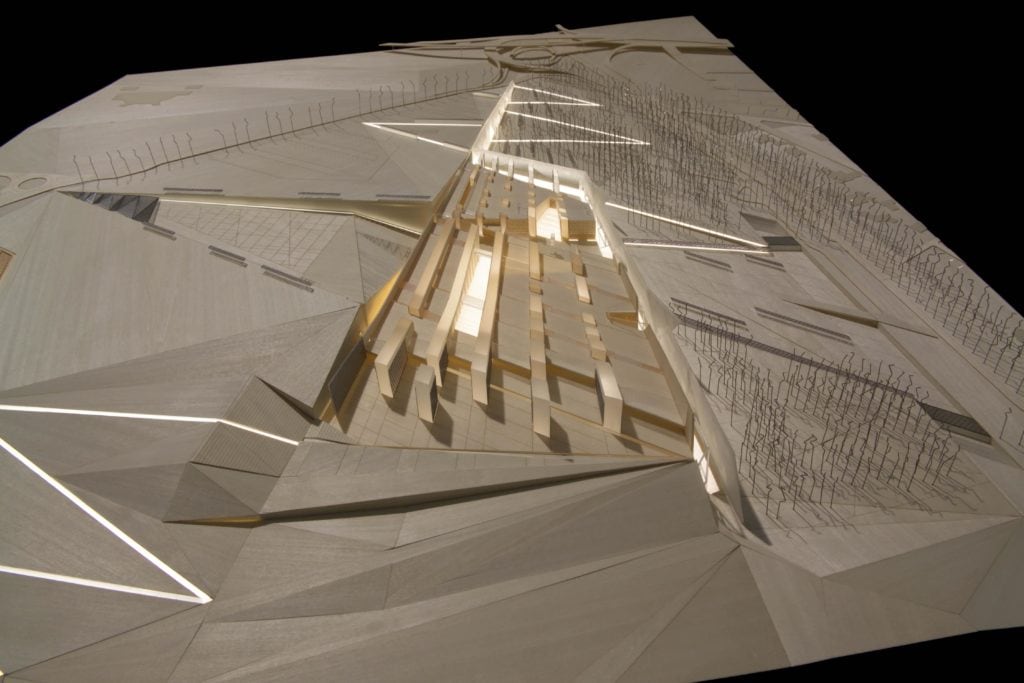
The status quo of the Grand Egyptian Museum
- The GEM is currently 95% complete.
- To date, a total of 55,137 artifacts from various Egyptian museums and archaeological sites have been transported to the GEM premises.
- Fully preserved are 47,722 artifacts, which have been restored in the GEM’s warehouse.
- An international consortium is selected through an international tendering process to operate and maintain the services and facilities of the Great Egyptian Museum. The contract is expected to be awarded in early May 2020.
- The GEM is now going through the selection process for the international company that will be in charge of organizing the museum’s inauguration and opening ceremony. The expected date for the award is next March.
- A two-kilometre-long boulevard is currently being built to provide tourists with a pleasant walk between the Great Pyramids and the GEM.
Photos/Renderinngs: Heneghan Peng Architects und Atelier Brückner




